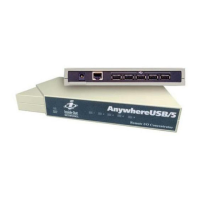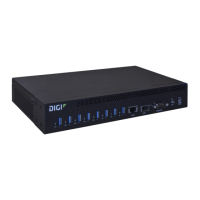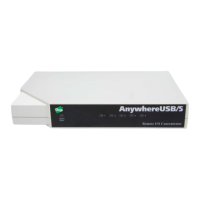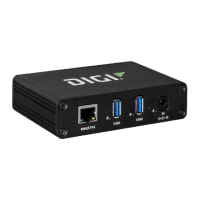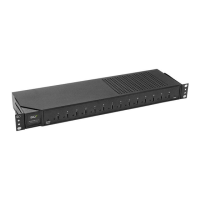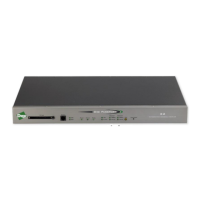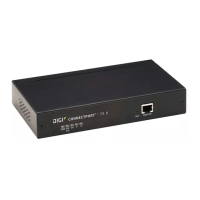Interfaces Wide Area Networks (WANs)
AnywhereUSB® Plus User Guide
166
g. For Use DNS:
n
Always: DNS will always be used for this WWAN; when multiple interfaces have the
same DNS server, the interface with the lowest metric will be used for DNS
requests.
n
When primary default route: Only use the DNS servers provided for this WWAN
when the WWAN is the primary route.
n
Never: Never use DNS servers for this WWAN.
The default setting is When primary default route.
19. Optional IPv6 configuration items:
a. Click IPv6 to expand.
b. IPv6 support is Enabled by default. Click to disable.
c. Set the Metric.
See Configure WAN/WWAN priority and default route metrics for further information about
metrics.
d. For Weight, type the relative weight for default routes associated with this interface. For
multiple active interfaces with the same metric, Weight is used to load balance traffic to
the interfaces.
e. Set the Management priority. This determines which interface will have priority for
central management activity. The interface with the highest number will be used.
f. Set the MTU.
g. For Use DNS:
n
Always: DNS will always be used for this WWAN; when multiple interfaces have the
same DNS server, the interface with the lowest metric will be used for DNS
requests.
n
When primary default route: Only use the DNS servers provided for this WWAN
when the WWAN is the primary route.
n
Never: Never use DNS servers for this WWAN.
The default setting is When primary default route.
1. See Configure SureLink active recovery to detect WAN/WWAN failures for information about
configuring SureLink.
Command line
1. Log into the AnywhereUSB Plus command line as a user with full Admin access rights.
Depending on your device configuration, you may be presented with an Access selection
menu. Type admin to access the Admin CLI.
2. At the command line, type config to enter configuration mode:
> config
(config)>

